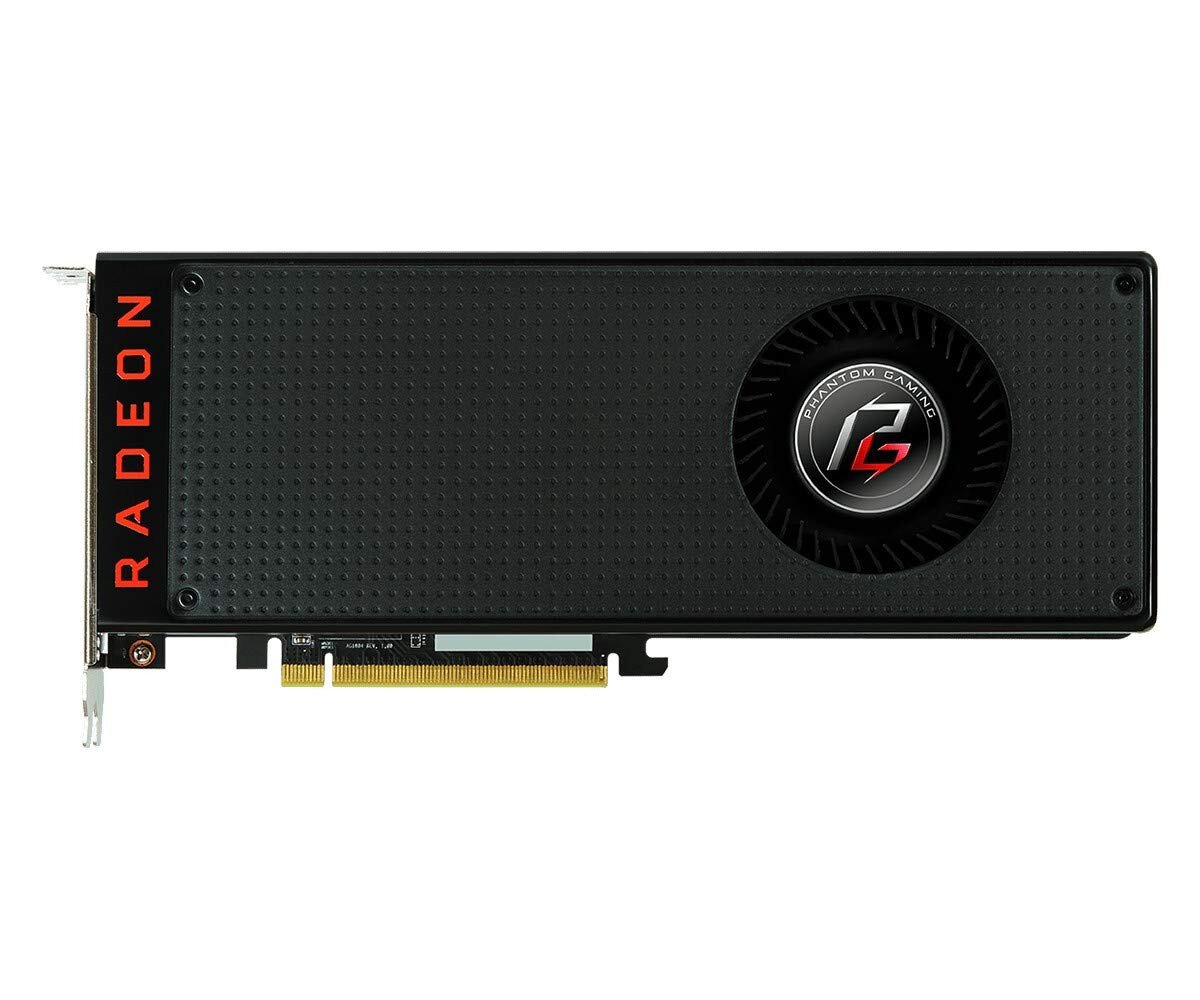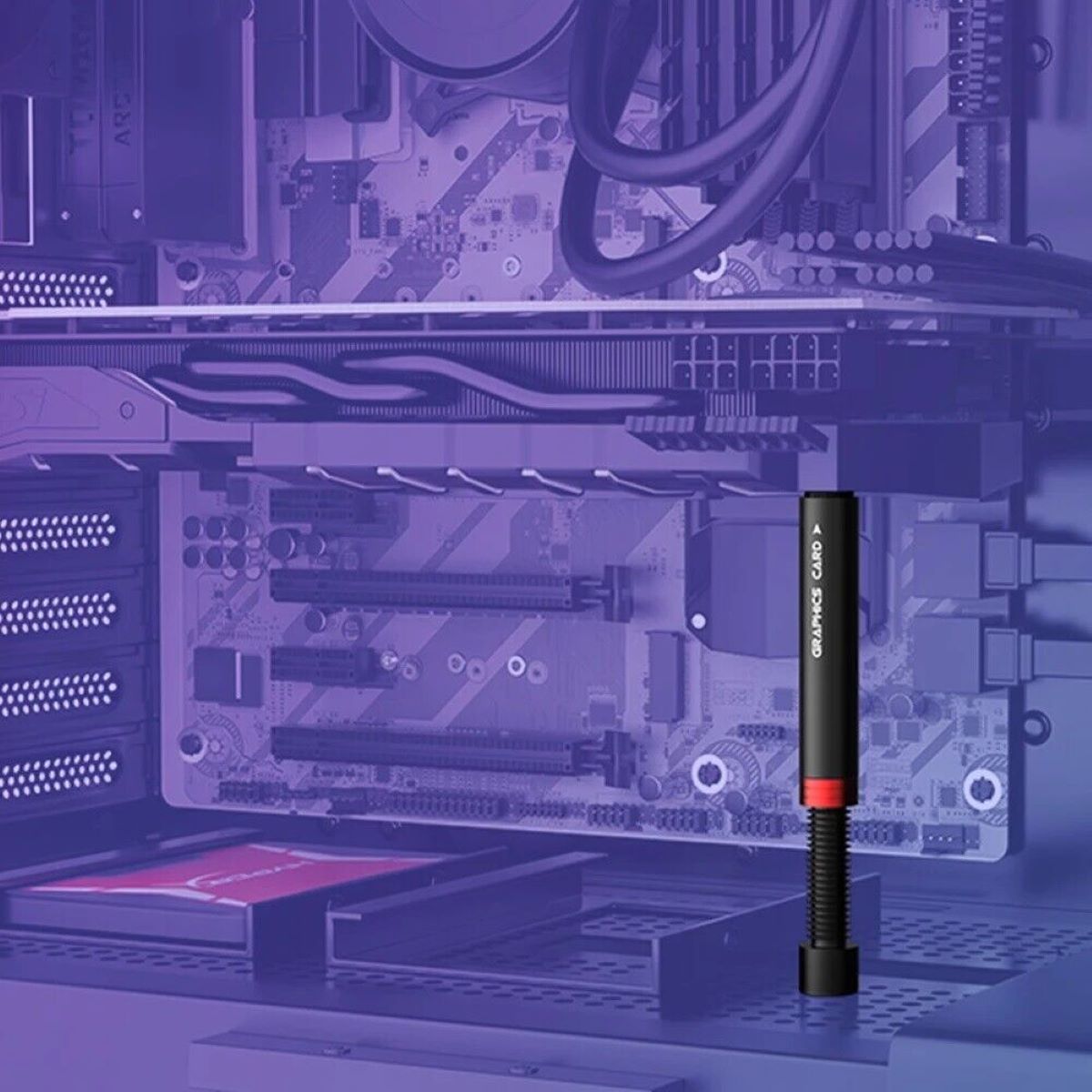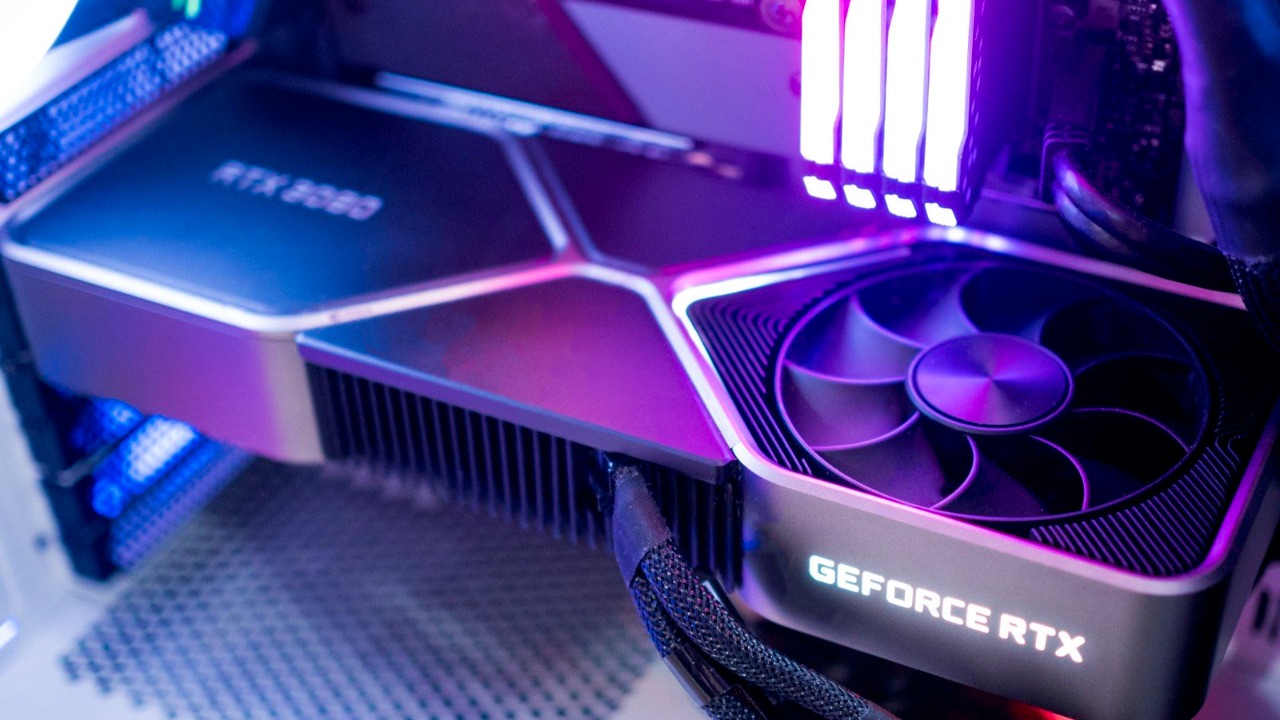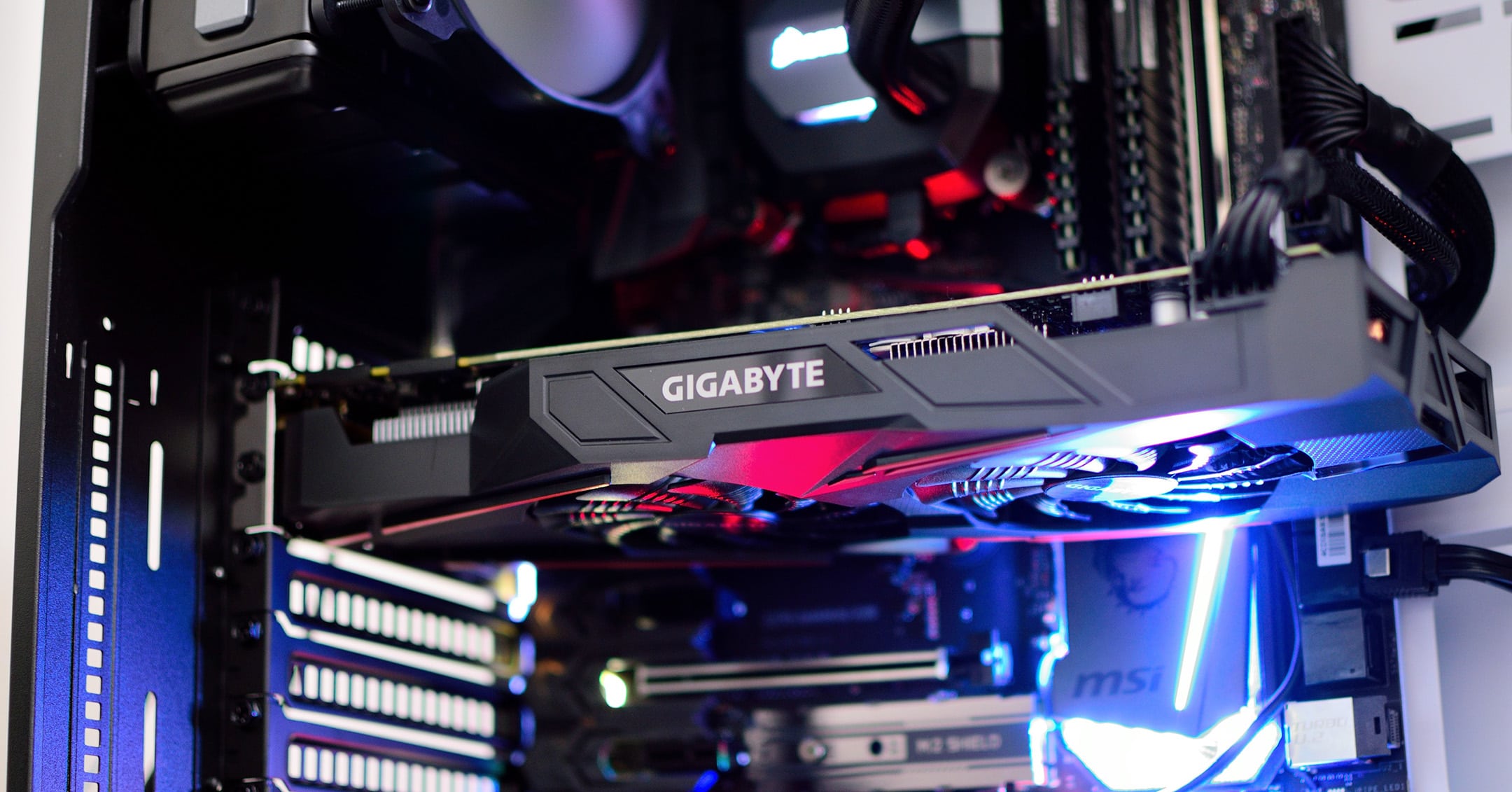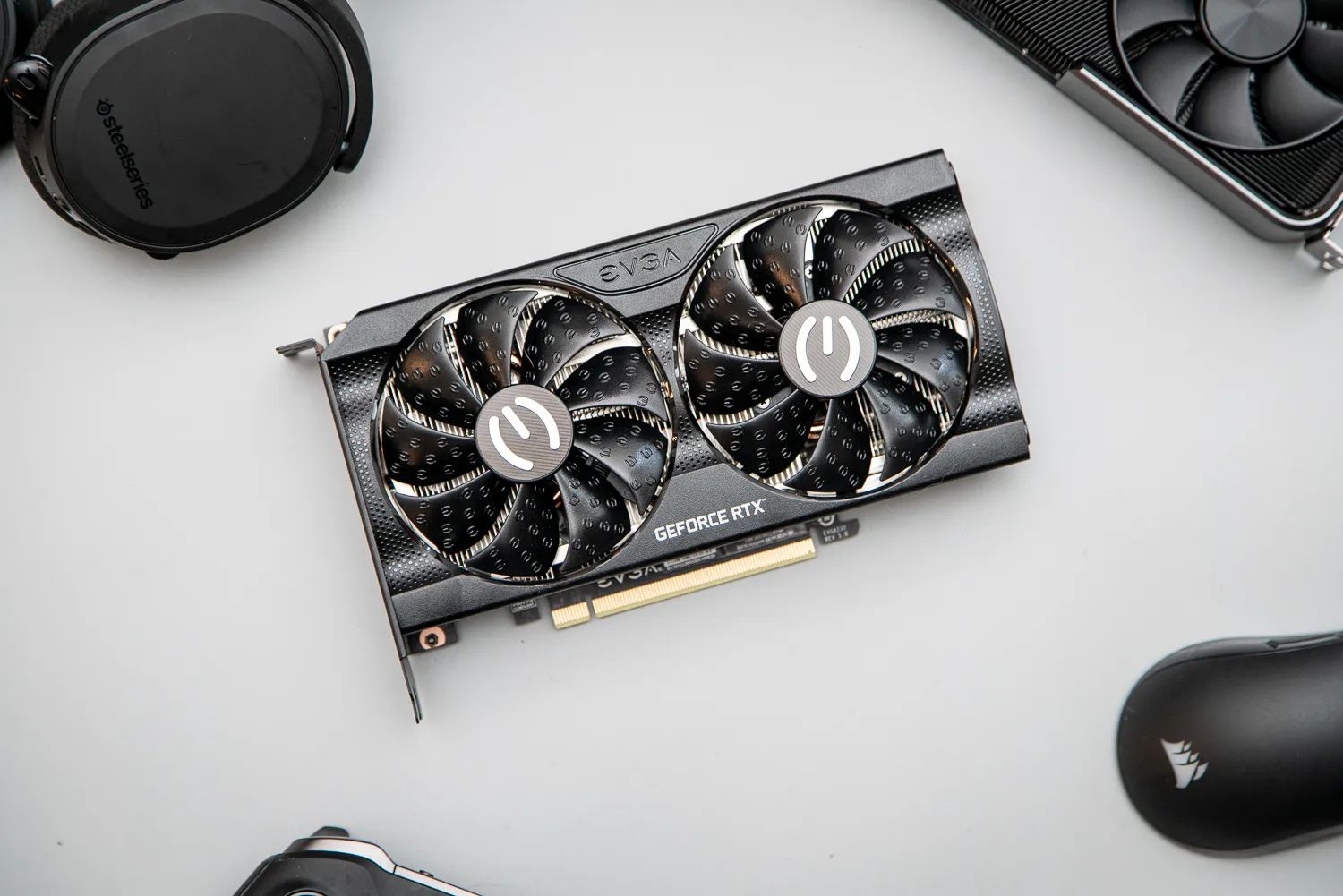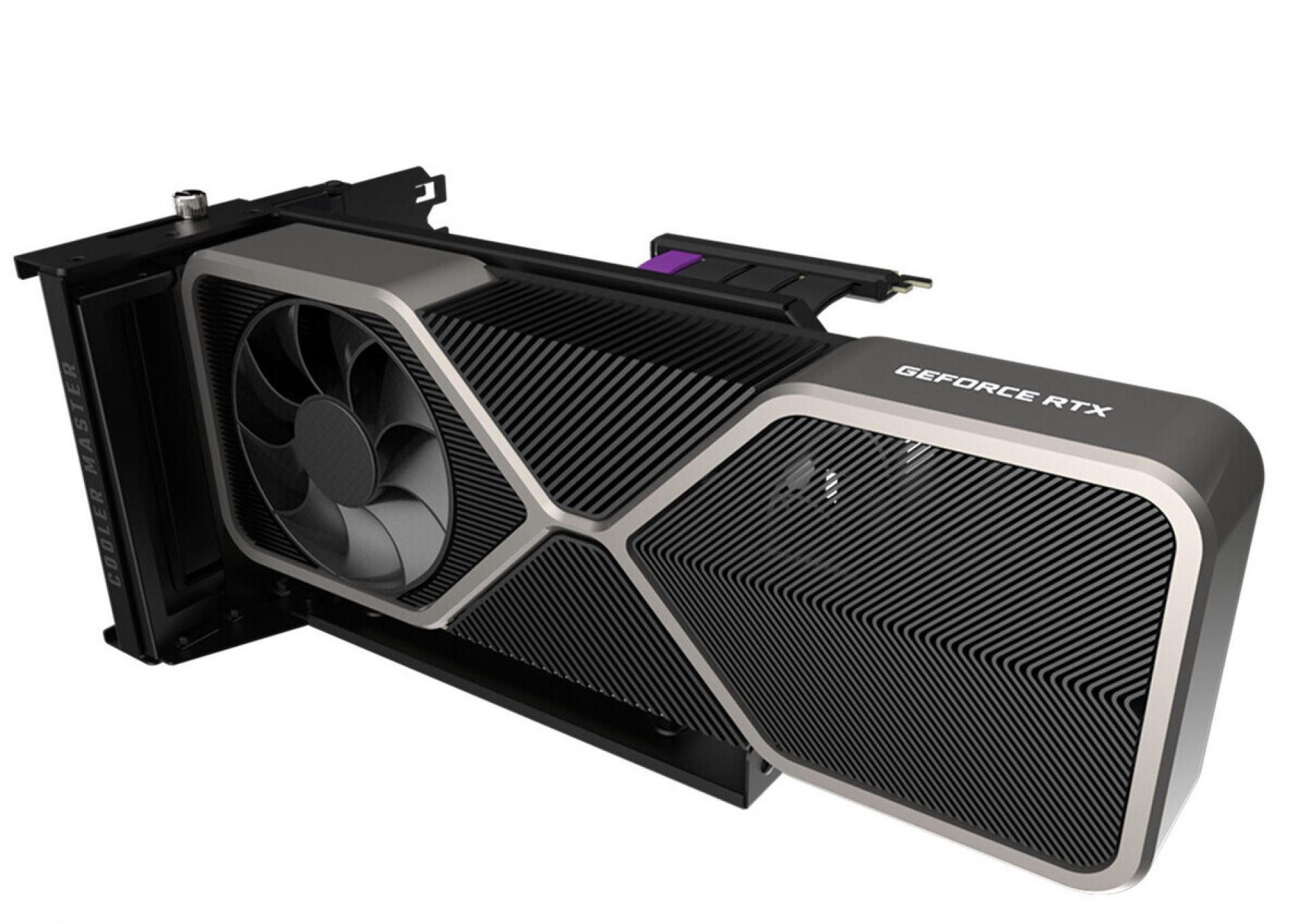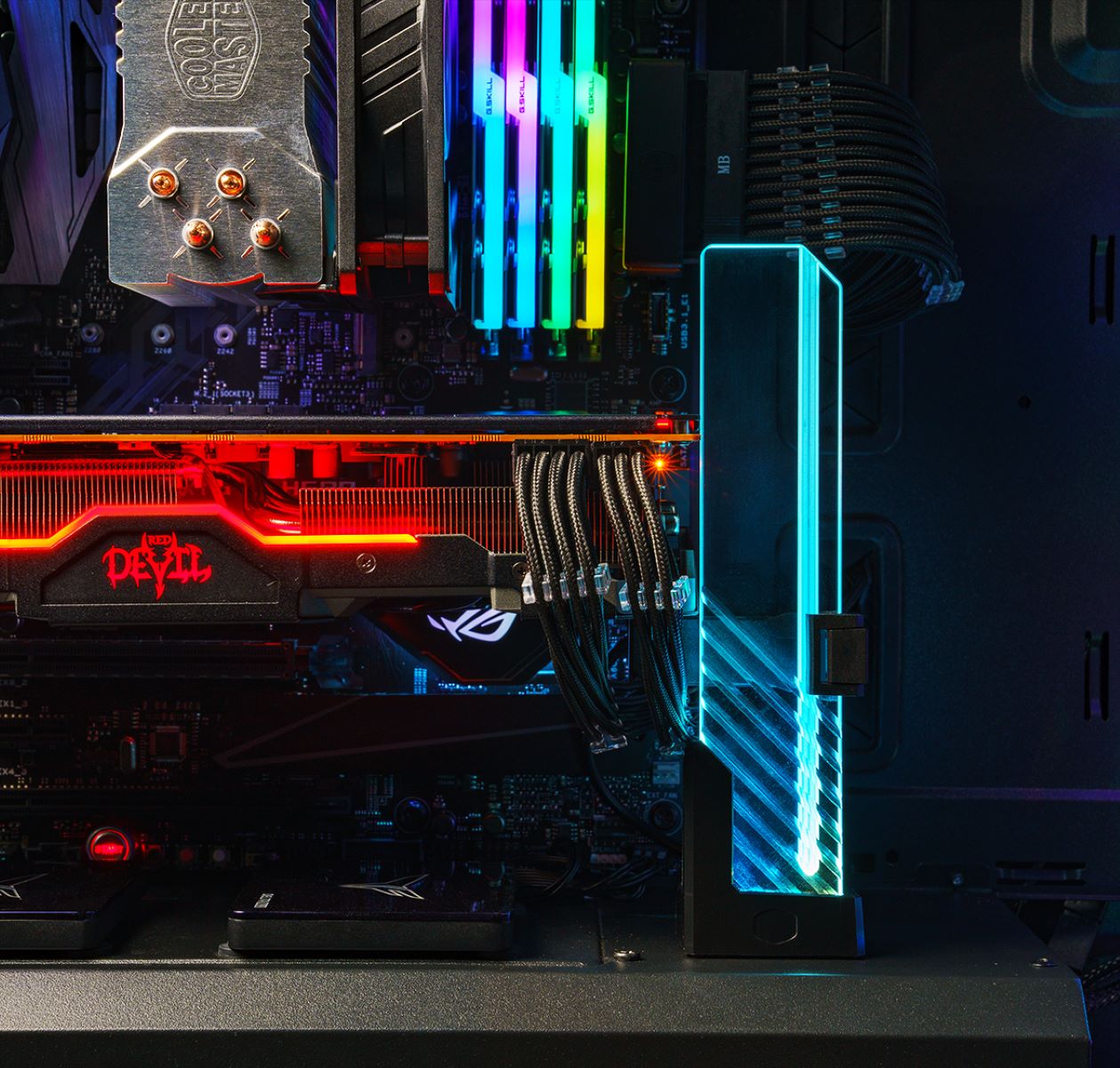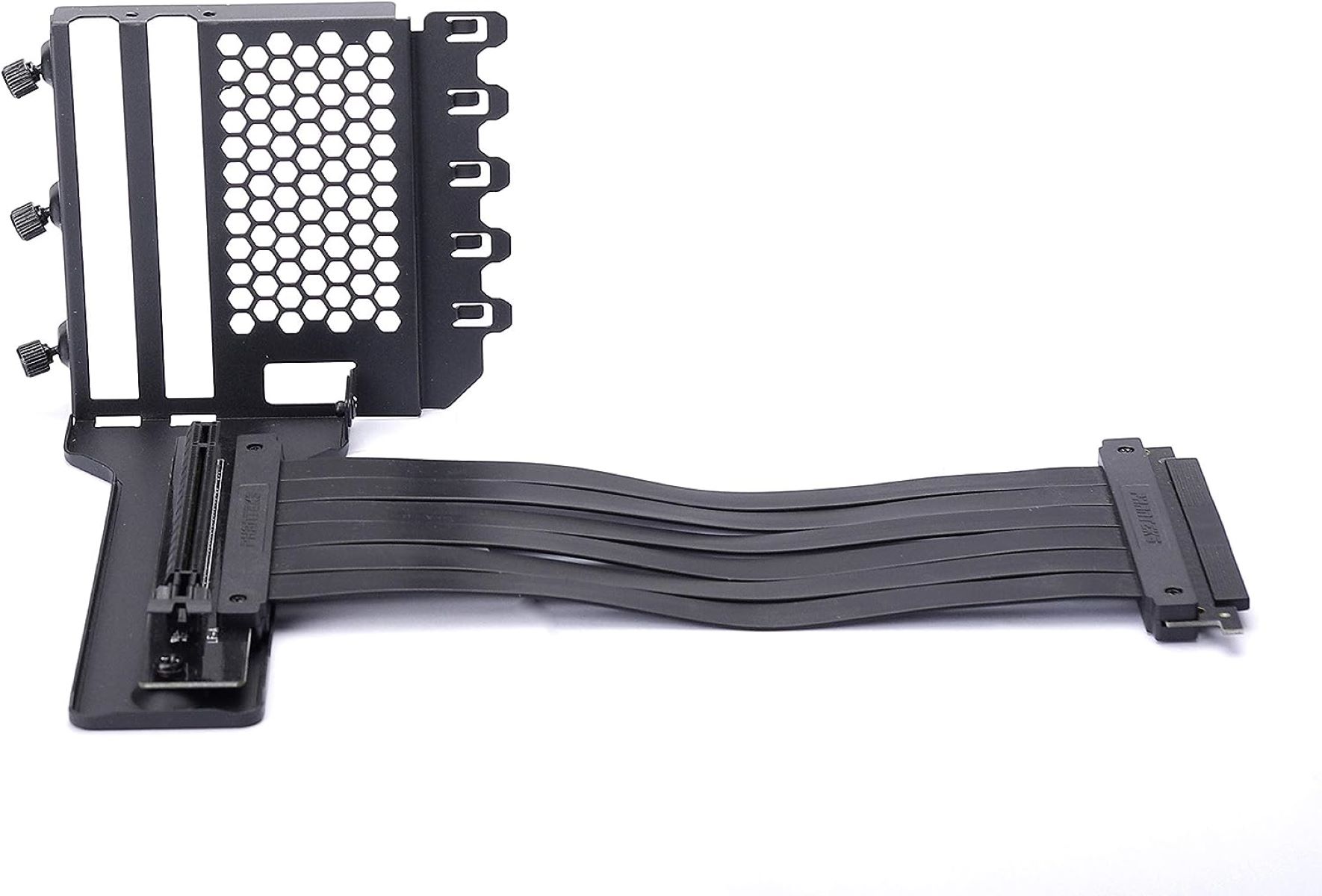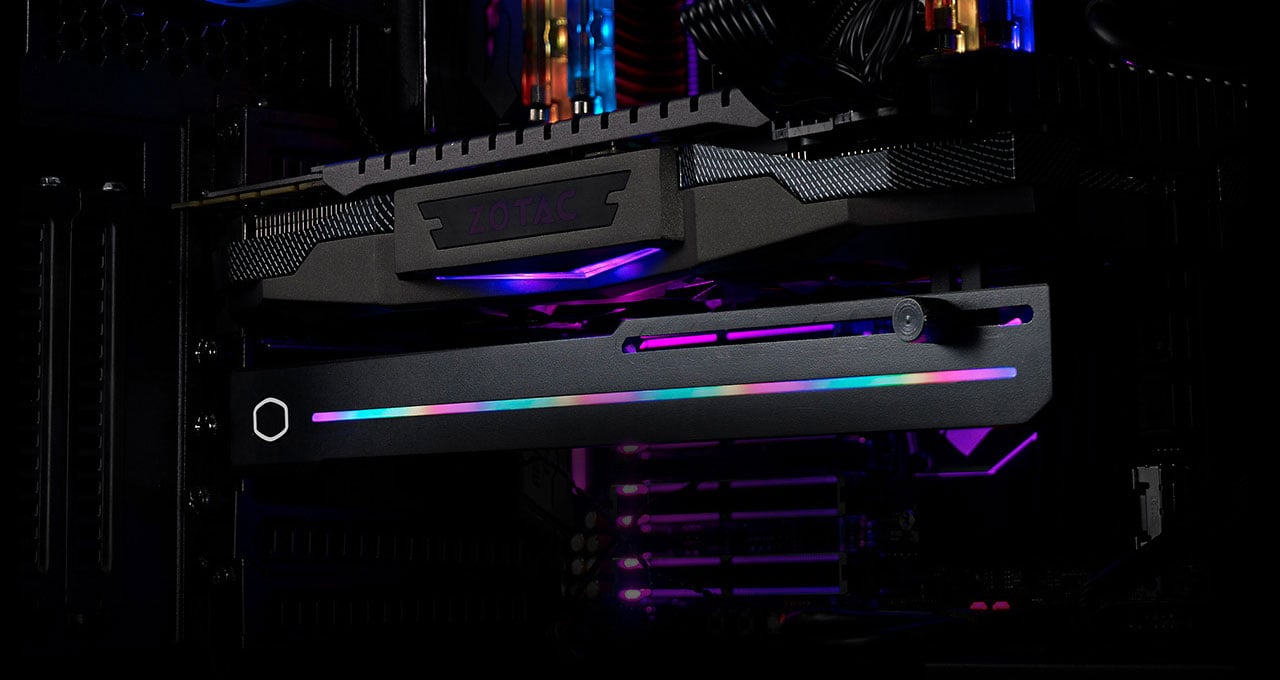Introduction
Welcome to the world of graphics cards and their compatibility with Metal. If you’re a gaming enthusiast, designer, or someone who works extensively with graphics-intensive applications, then you’ve probably come across the term “Metal Compatible Graphics Card.” But what exactly does it mean?
In simple terms, a Metal Compatible Graphics Card refers to a graphics card that is capable of supporting and leveraging Apple’s Metal framework. Metal is a low-level application programming interface (API) developed by Apple that allows developers to maximize the performance of graphics-intensive tasks on macOS and iOS devices.
With Metal, developers have direct access to the GPU (Graphics Processing Unit) on their devices, making it possible to achieve higher performance and better visual quality in applications that utilize 3D graphics, virtual reality, augmented reality, and machine learning.
Whether you’re a gamer looking for smooth gameplay, a designer aiming to render complex visual effects, or a developer working on cutting-edge applications, having a Metal Compatible Graphics Card can significantly enhance your overall experience.
Join us as we dive deeper into the fascinating world of Metal Compatible Graphics Cards, exploring their benefits, features, and how to determine if your graphics card is Metal compatible. We’ll also discuss some popular Metal Compatible Graphics Cards and guide you on how to install one.
So, if you’re ready to unlock the full potential of your macOS or iOS device and take your graphics performance to the next level, let’s get started!
Definition of Metal Compatible Graphics Card
A Metal Compatible Graphics Card refers to a graphics card that is compatible with Apple’s Metal framework, a low-level API designed to optimize graphics-intensive tasks on macOS and iOS devices. Metal allows developers to directly access the GPU (Graphics Processing Unit) on their devices, enabling them to achieve better performance and visual quality in applications that utilize 3D graphics, virtual reality, augmented reality, and machine learning.
Graphics cards are essential components in gaming PCs and workstations, responsible for rendering images, videos, and animations. A Metal Compatible Graphics Card is specifically designed to work seamlessly with Metal, providing improved performance and efficiency compared to non-compatible counterparts.
With a Metal Compatible Graphics Card, users can experience smooth gameplay in graphic-intensive games, faster video rendering and editing workflows, and enhanced performance in creative applications that rely on GPU acceleration. These cards are engineered to handle complex visual effects, high-resolution textures, and advanced shading techniques with ease.
Metal Compatible Graphics Cards typically come equipped with advanced features like high core counts, large memory capacities, and excellent cooling solutions to ensure optimal performance during demanding tasks. They are also designed to meet the power requirements and compatibility standards set by Apple for their macOS and iOS operating systems.
As Metal continues to evolve, with each new release bringing performance optimizations and enhanced capabilities, having a Metal Compatible Graphics Card becomes increasingly important for users who want to stay at the forefront of graphics technology.
It’s worth noting that Metal Compatibility is not limited to newer graphics cards. Many older models are also Metal compatible, allowing users with older hardware to take advantage of the Metal framework and its benefits.
In the next sections, we will explore the various benefits and features of Metal Compatible Graphics Cards, as well as how to determine if your graphics card is Metal compatible and popular options available on the market.
Benefits of Metal Compatible Graphics Card
Investing in a Metal Compatible Graphics Card can offer a multitude of benefits for users who rely on graphics-intensive tasks, whether it’s gaming, 3D rendering, or creative work. Here are some key advantages of having a Metal Compatible Graphics Card:
- Enhanced Performance: Metal Compatible Graphics Cards leverage the power of Apple’s Metal framework, allowing applications to access the GPU directly. This results in improved performance, faster rendering times, and smoother gameplay in graphic-intensive tasks.
- Optimized Graphic Workflows: A Metal Compatible Graphics Card is specifically designed to handle complex visual effects and high-resolution textures with ease. This means faster video rendering and editing workflows, smoother animation playback, and improved performance in creative applications like Adobe Photoshop, Final Cut Pro, and Autodesk Maya.
- Improved Gaming Experience: Gamers can benefit greatly from a Metal Compatible Graphics Card. These cards provide better frame rates, reduced lag, and enhanced visual quality in games that support Metal. Whether it’s the latest AAA title or an indie gem, a Metal Compatible Graphics Card can deliver a more immersive and enjoyable gaming experience.
- Virtual Reality (VR) and Augmented Reality (AR) Support: Metal Compatible Graphics Cards are well-equipped to handle the demanding graphics requirements of VR and AR applications. They can deliver seamless and immersive experiences, with realistic visuals and smooth performance, making them an ideal choice for users interested in exploring virtual and augmented realities.
- Machine Learning and AI Performance: Metal Compatible Graphics Cards excel in machine learning and AI workloads due to their powerful GPU capabilities. They provide faster training times and more accurate results in tasks like image recognition, natural language processing, and deep learning algorithms.
- Compatibility with macOS and iOS: Metal Compatible Graphics Cards are designed to meet Apple’s compatibility standards, ensuring they work seamlessly with macOS and iOS. They are optimized to deliver the best performance and stability on Apple devices, offering a reliable and consistent experience across the ecosystem.
These are just a few of the many benefits that Metal Compatible Graphics Cards bring to the table. By investing in a Metal Compatible Graphics Card, users can unlock the full potential of their macOS or iOS device, achieving faster rendering, smoother gameplay, and improved graphic performance in a wide range of applications.
Features of Metal Compatible Graphics Card
Metal Compatible Graphics Cards come packed with a range of features that enable them to deliver top-notch performance and visual quality. These features are specifically tailored to meet the demands of graphics-intensive applications and are optimized to work seamlessly with Apple’s Metal framework. Here are some notable features of Metal Compatible Graphics Cards:
- High Core Count: Metal Compatible Graphics Cards often feature a high core count, which allows for parallel processing and faster rendering of complex graphics. This is crucial for tasks such as 3D rendering, video editing, and gaming, where multiple calculations need to be performed simultaneously.
- Large Memory Capacity: Graphics-intensive applications require ample memory to store and process large datasets. Metal Compatible Graphics Cards often come equipped with generous memory capacities, ensuring smooth performance and allowing for the handling of high-resolution textures, intricate shaders, and complex visual effects.
- Advanced Cooling Solutions: The power and performance of Metal Compatible Graphics Cards generate heat, which, if not managed properly, can lead to thermal throttling and reduced performance. To tackle this issue, these cards often feature advanced cooling solutions such as robust heatsinks, multiple fans, and efficient thermal management technologies.
- Support for Advanced Shading Techniques: Metal Compatible Graphics Cards support advanced shading techniques like tessellation, global illumination, and real-time ray tracing. These techniques enhance the visual fidelity of games and applications by adding realistic lighting, shadows, and reflections, resulting in a more immersive and lifelike experience.
- Multi-Display Support: Many Metal Compatible Graphics Cards offer support for multiple displays, allowing users to connect multiple monitors for extended desktops or immersive gaming setups. This feature is particularly useful for professionals who require a larger workspace or gamers who want to enjoy panoramic views in games.
- Power Efficiency: Metal Compatible Graphics Cards are engineered to provide optimal performance while maintaining power efficiency. This allows for longer gaming sessions, extended rendering times, and smoother operation without consuming excessive power or overheating.
- Compatibility and Driver Support: Metal Compatible Graphics Cards are designed to work seamlessly with macOS and iOS, offering robust compatibility and driver support. Updated drivers and regular optimizations ensure that these cards deliver the best performance and reliability for users across various applications and operating system updates.
These features collectively make Metal Compatible Graphics Cards well-suited for demanding workloads and applications that require high-performance graphics capabilities. From superior rendering and visual effects to efficient cooling and power management, these cards offer the tools necessary for a seamless and immersive graphics experience on Apple devices.
How to Determine if Your Graphics Card is Metal Compatible
If you’re unsure whether your graphics card is Metal compatible, there are a few ways to confirm its compatibility. Follow these steps to determine if your graphics card supports Apple’s Metal framework:
- Check Apple’s Documentation: Visit Apple’s official website or check their developer documentation to see if your graphics card model is listed as Metal compatible. Apple provides a list of supported graphics cards for each macOS version, which can help you determine the compatibility status of your specific card.
- Check the Manufacturer’s Website: Visit the website of your graphics card’s manufacturer and search for your card’s specifications. Look for mentions of Metal compatibility or support in the product details or specifications. Manufacturers often provide information about their graphics card’s compatibility with different APIs and frameworks, including Metal.
- Use System Information: On macOS, you can use the built-in System Information tool to gather information about your graphics card. To access System Information, go to the Apple menu, select “About This Mac,” and click on “System Report” or “System Information.” Under the “Graphics/Displays” category, locate your graphics card and look for information about Metal compatibility. If the Metal Support field indicates “Supported,” then your graphics card is Metal compatible.
- Use Third-Party Tools: There are third-party tools available that can provide detailed information about your graphics card, including its compatibility with Metal. Tools like GPU-Z for Windows and Macs Fan Control for macOS can provide insights into your graphics card’s capabilities, including Metal support.
It’s important to note that Metal compatibility can vary depending on the macOS version you are using. Some older graphics cards may not be officially supported by Apple’s Metal framework but can still be used with Metal-enabled applications, courtesy of third-party drivers or community-developed patches.
Before upgrading your macOS version or purchasing a new graphics card, it’s always a good idea to check the official documentation and compatibility lists provided by Apple to ensure the best possible compatibility and performance.
If you find that your current graphics card is not Metal compatible, you may consider upgrading to a newer and Metal-compatible model to take advantage of the performance and visual benefits provided by Metal.
Popular Metal Compatible Graphics Cards
There are several metal compatible graphics cards available on the market that offer excellent performance and compatibility with Apple’s Metal framework. Here are some of the popular options:
- AMD Radeon RX 5700 XT: This high-performance graphics card from AMD offers exceptional gaming and rendering capabilities. With 8GB of GDDR6 memory and support for PCIe 4.0, it provides smooth gameplay and efficient performance in Metal-enabled applications.
- NVIDIA GeForce RTX 3080: The RTX 3080 from NVIDIA is a powerhouse graphics card for gaming and content creation. With its 10GB of GDDR6X memory and second-generation Ray Tracing cores, it delivers stunning visuals and real-time ray tracing in Metal-supported games and applications.
- AMD Radeon Pro WX 7100: Aimed at professionals and content creators, the Radeon Pro WX 7100 offers excellent performance and reliability. With 8GB of GDDR5 memory and optimized drivers, it delivers superior graphics performance for tasks like 3D modeling, video editing, and virtual reality experiences.
- NVIDIA Quadro RTX 5000: Ideal for professional workflows, the Quadro RTX 5000 packs 16GB of GDDR6 memory and features Turing architecture with Tensor Cores for AI acceleration. This powerful graphics card ensures smooth rendering, fast AI computations, and real-time simulation in Metal-supported applications.
- AMD Radeon RX 580: A popular mid-range option, the Radeon RX 580 offers a balance of affordability and performance. With 8GB of GDDR5 memory and a high core count, it provides smooth gaming experiences and efficient graphics processing in Metal-enabled applications.
- NVIDIA GeForce GTX 1660 Ti: The GTX 1660 Ti is a cost-effective graphics card that delivers impressive performance in its price range. With 6GB of GDDR6 memory and Turing architecture, it offers smooth gameplay and reliable graphics processing in Metal-supported games and applications.
These are just a few examples of popular Metal Compatible Graphics Cards. It’s essential to consider your specific requirements, budget, and compatibility with your macOS or iOS device when choosing a graphics card. Additionally, as new models are constantly released, it’s worth researching and comparing the latest options to find the best Metal Compatible Graphics Card that suits your needs.
How to Install a Metal Compatible Graphics Card
If you’ve decided to upgrade your graphics card to a metal compatible one, here are the general steps to follow when installing it:
- Prepare your system: Before beginning the installation, make sure to power off your computer and unplug it from the power source. Take necessary precautions to ground yourself and reduce the risk of static electricity damaging your components.
- Open the computer case: Depending on your computer’s form factor (desktop tower, mini-ITX, etc.), locate and remove the screws or latches securing the side panel of the case. Gently slide or lift off the panel to expose the internal components.
- Identify the PCIe slot: Locate the PCIe slot on the motherboard where the graphics card will be inserted. Depending on the motherboard, the PCIe slot might be labeled or color-coded. It is typically longer than other slots and located closest to the CPU.
- Remove the existing graphics card (if applicable): If you have a previous graphics card installed, carefully disconnect any power cables and remove it from the PCIe slot by releasing the retention clip or screws holding it in place.
- Insert the new graphics card: Align the metal contacts on the bottom of the graphics card with the PCIe slot. Gently apply even pressure to insert the card into the slot until it is firmly seated. Ensure that the retention clip locks into place to secure the graphics card.
- Connect power cables (if required): Some high-performance graphics cards require additional power connections. Consult the card’s documentation to determine the necessary power connectors and connect them securely from the power supply to the graphics card.
- Close the computer case: After ensuring that all connections are secure, carefully slide the side panel back into position and fasten it with the screws or latches. Ensure that the case is sealed properly to maintain proper airflow.
- Power on and install drivers: Plug in your computer and power it on. Once the system boots up, install the latest drivers for your graphics card. Visit the manufacturer’s website and download the appropriate drivers for your operating system. Follow the installation instructions provided by the manufacturer to complete the process.
- Configure display settings: After installing the drivers, access the display settings on your computer and make any necessary adjustments to ensure the new graphics card is recognized and properly configured. Set the desired resolution and refresh rate for your monitor(s) connected to the graphics card.
Please note that these steps are general guidelines, and the specific installation process may vary depending on your computer’s make and model. It is always recommended to consult the documentation provided by the graphics card manufacturer and your computer’s user manual for precise installation instructions.
By following these steps, you should be able to successfully install a Metal Compatible Graphics Card and enjoy the enhanced graphics performance it offers in Metal-enabled applications.
Frequently Asked Questions about Metal Compatible Graphics Cards
Here are some common questions that users often have regarding Metal Compatible Graphics Cards:
- What is the advantage of having a Metal Compatible Graphics Card?
- Do all graphics cards support Metal?
- Can I use a Metal Compatible Graphics Card on an older macOS version?
- Can I use a Metal Compatible Graphics Card on a Hackintosh?
- Do Metal Compatible Graphics Cards work on iOS devices?
- Can I use multiple Metal Compatible Graphics Cards in SLI/CrossFire?
- Can I use a Metal Compatible Graphics Card for Bitcoin mining or cryptocurrency mining?
- How regularly should I update the drivers for my Metal Compatible Graphics Card?
- Will installing a Metal Compatible Graphics Card void my warranty?
A Metal Compatible Graphics Card allows you to leverage Apple’s Metal framework, resulting in improved performance, faster rendering times, and enhanced visual quality in graphics-intensive tasks such as gaming, 3D rendering, video editing, and machine learning applications.
No, not all graphics cards support Metal. Metal compatibility depends on the specific hardware, architecture, and driver support provided by the graphics card manufacturer.
Metal Compatible Graphics Cards typically require a specific macOS version or later to fully utilize the Metal framework. It’s essential to check the compatibility requirements of the graphics card and the minimum supported macOS version before making a purchase.
While some Metal Compatible Graphics Cards may work with Hackintosh setups, it’s important to note that reliable compatibility cannot be guaranteed. Hackintosh systems require careful consideration of compatible hardware and custom driver installations, and Metal support can vary.
No, Metal Compatible Graphics Cards are designed to work with macOS systems. iOS devices, such as iPhones and iPads, have their own integrated GPUs that support Metal.
No, SLI (Scalable Link Interface) for NVIDIA cards and CrossFire for AMD cards are not supported on macOS systems. However, applications can still take advantage of multiple GPUs for parallel processing and GPU acceleration.
Metal Compatible Graphics Cards can be used for cryptocurrency mining, but they are generally not as efficient as specialized mining hardware. Mining performance depends on several factors, including the specific cryptocurrency being mined and the mining software used.
It’s recommended to keep your graphics card drivers up to date to ensure optimal performance and compatibility with the latest Metal-based applications. Check the manufacturer’s website for driver updates periodically or enable automatic driver update notifications.
Installing a Metal Compatible Graphics Card should not void your computer’s warranty, but it’s advisable to consult your computer manufacturer or check the warranty terms to confirm. However, modifying or tampering with other components or overclocking the graphics card may potentially void the warranty.
These answers should provide some clarity on common questions about Metal Compatible Graphics Cards. It’s always recommended to refer to the specific documentation and support resources provided by the graphics card manufacturer for more detailed information about your specific model.
Conclusion
In conclusion, a Metal Compatible Graphics Card is a graphics card that is designed to work seamlessly with Apple’s Metal framework. By leveraging the power of Metal, these cards offer enhanced performance, improved rendering times, and superior visual quality in graphics-intensive tasks such as gaming, 3D rendering, video editing, and machine learning applications.
Metal Compatible Graphics Cards come with a range of features, including high core counts, large memory capacities, advanced cooling solutions, support for advanced shading techniques, and power efficiency. These features ensure optimal performance and reliability, delivering a smooth and immersive graphics experience on macOS and iOS devices.
Determining if your graphics card is Metal compatible can be done by checking Apple’s documentation, the manufacturer’s website, using system information tools, or utilizing third-party tools. It’s important to consider compatibility with your specific macOS version and manufacturer’s recommendations.
Popular Metal Compatible Graphics Cards include the AMD Radeon RX 5700 XT, NVIDIA GeForce RTX 3080, AMD Radeon Pro WX 7100, NVIDIA Quadro RTX 5000, AMD Radeon RX 580, and NVIDIA GeForce GTX 1660 Ti. These cards offer different levels of performance and cater to various user needs and budgets.
Installing a Metal Compatible Graphics Card involves preparing the system, opening the computer case, identifying the PCIe slot, removing the existing graphics card if applicable, inserting the new graphics card, connecting power cables if required, closing the computer case, and installing the latest drivers.
In summary, a Metal Compatible Graphics Card is an excellent investment for users seeking enhanced graphics performance, improved rendering times, and superior visual quality on their macOS and iOS devices. With an array of features and compatibility with Apple’s Metal framework, these cards unlock new possibilities for gaming, content creation, and professional workflows.







